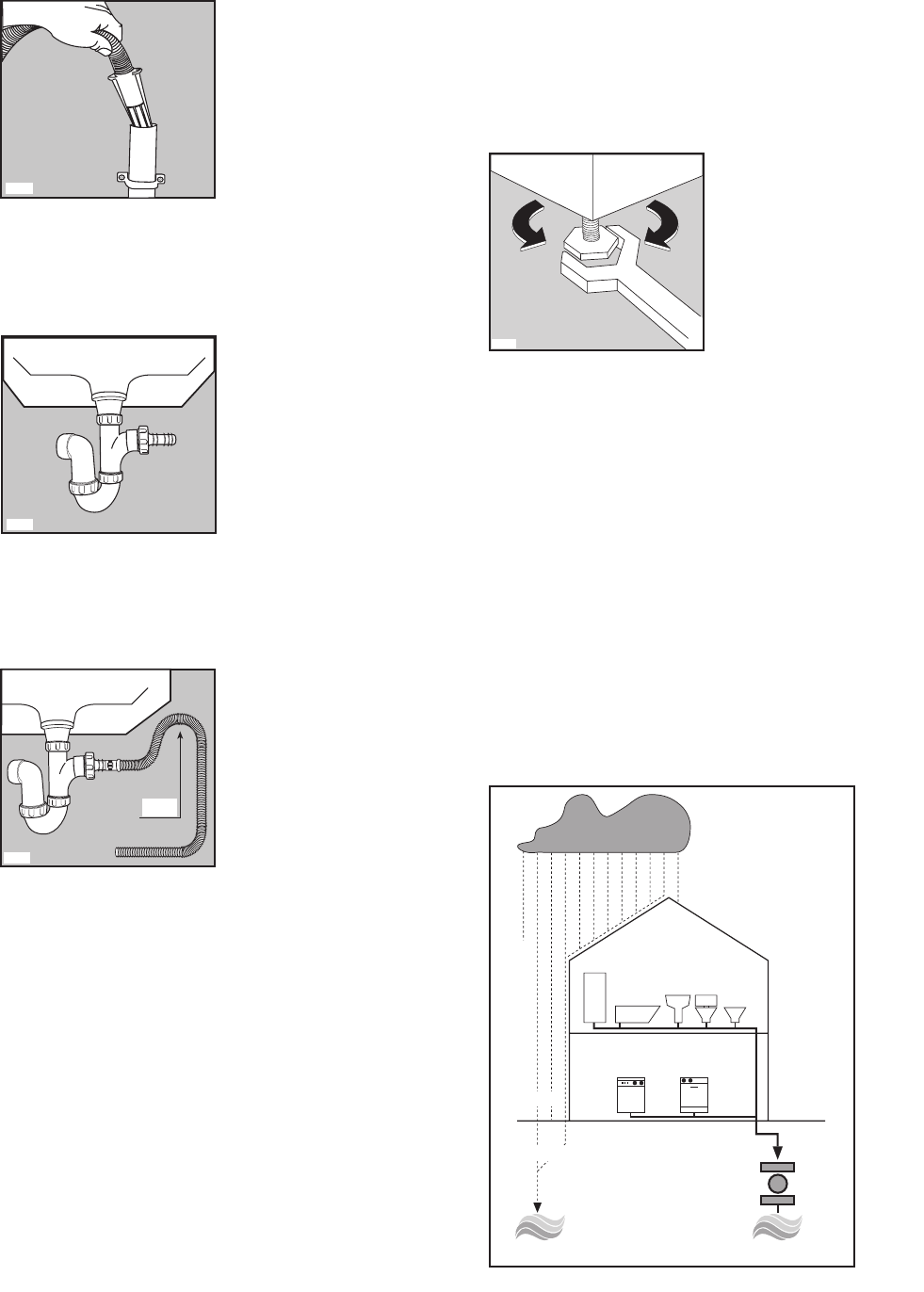
9
2. Onto a sink outlet spigot.
If the outlet spigot has not been used before, remove
any blanking plug that may be in place.
Push the drain hose onto the spigot and secure with a
clip if required, ensure a loop is formed in the drain
hose (see diagram) to prevent waste from the sink
entering the washing machine.
Important
●
Before connecting the machine to new pipework or
to pipework that has not been used for some time,
run off a reasonable amount of water to flush out
any debris that may have collected in the pipes.
●
For a correct functioning of the machine the drain
hose must be hooked on the proper support piece
situated on the top of the back side of the
appliance.
P1198
Loop
P1197
P1212
Levelling
Level the washing machine by raising or lowering the
feet. The feet may be tight to adjust as they incorporate
a self locking nut, but the machine MUST be level and
stable (check diagonally).
Any necessary adjustment can be made with a spanner.
Accurate levelling prevents vibration, (see note on
positioning), noise and displacement of the machine
during operation.
Some vibration is inevitable, especially if mounted on a
wooden floor.
Sprung wooden floors are particularly susceptible to
vibration. For advice, consult a builder. If possible,
always place the machine on a solid floor.
In the interest of the environment
Washing machines and dishwashers should be
connected to the FOUL drainage system, the water will
then be taken to a sewage works for treatment before
being discharged safely into a river.
SHOWER
BATH
SINK TOILET
BIDET
WASHING
MACHINE
DISHWASHER
RAINWATER
'RUN-OFF'
SURFACE WATER
DRAINS & SEWERS
UNTREATED
DISCHARGE
RIVER
FOUL DRAIN
FOUL SEWERS
SEWAGE
TREATMENT
WORKS
RIVER
P0987
TREATED
DISCHARGE
P1051


















